Small town in the south-east of South Korea, in the province of North Gyeongsang, Gyeongju is the ideal destination if you want to get away from the mega-cities of Seoul and Busan. During our korean stay, we decided to stay in Busan for a few days and plan a number of day trips in the surrounding area. One of these days was devoted to a visit to Gyeongju 경주시, the former capital of the Silla kingdom. A veritable open-air museum, the town was a real feast for the eyes and one of my favourite visits of the trip. In this article, I propose you a little guide that might just make you want to add Gyeongju to your trip to Korea!
Last update: August 2023
Gyeongju, Korea’s historic jewel
Gyeongju (경주시) is the former capital of the Silla kingdom, one of the kingdoms that ruled Korea as we know it today. The Silla kingdom, founded in 57 BC, lasted until 935, when the Korean peninsula was unified. Today, the city is very popular for its history and its representation of Korean culture, as it blends the ancient with the modern! It is therefore one of the oldest historic cities in the world… In fact, it’s home to no fewer than 52 sites listed by UNESCO as “Gyeongju’s historic remains”, as you can see in this article. We just had to visit it on our little tour of Korea, right?

Discovering Gyeongju
Bordered by the Hyeonsang River, Gyeongju is a peaceful city, far from the hustle and bustle of Seoul or Busan. It’s a real treasure trove for South Korea, and you could say it’s an open-air museum! If you’re interested in culture and history, this is certainly a destination not to be missed. Staying in Busan and taking advantage of the return to normal after the typhoon we went through, we decided to devote a day to visiting the city.
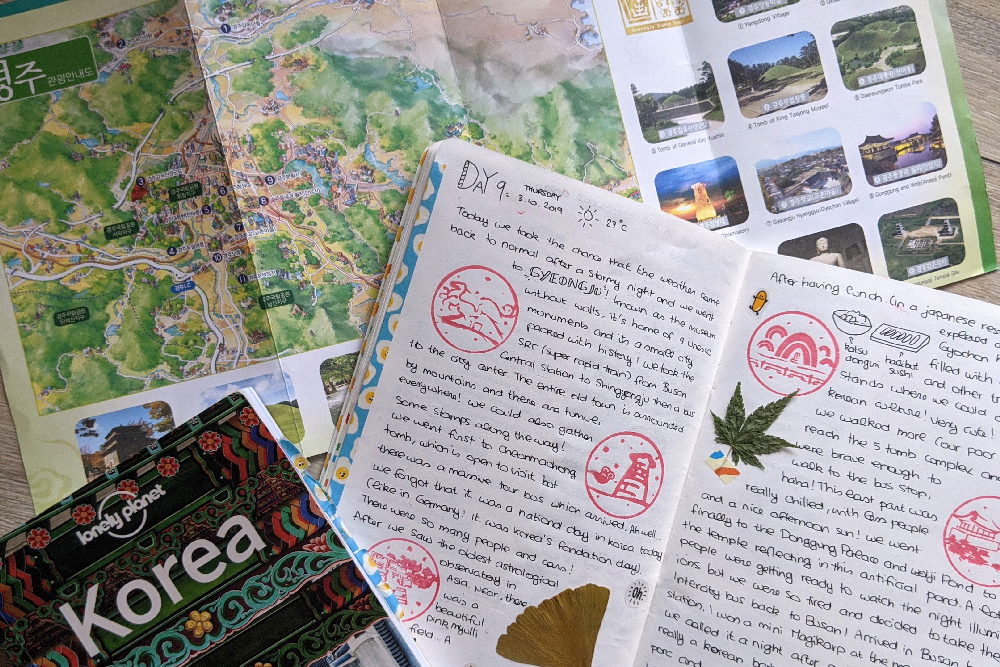
Although it was October, the weather was beautiful with 27 degrees. For the first time, we took the SRT (super rapid train) from Busan Central Station to Shingyeongju and then a bus to the city centre. If you want to do what we did, I strongly advise you to take the train as the journey only takes 30 minutes and cost us 10,000₩ (or €7.50). Once you arrive at Shingyeongju, the train station to the south-east of Gyeongju, you can take buses 50, 60, 61, 70, 201 or 700 to the city centre and it takes around 15 minutes. Don’t forget to take a map of Gyeongju at the nearby tourism office, as it gives you routes to take as well as an overview of each tourist attraction (I’ll put the link to the PDF map at the end of the article). For stamp lovers like me, you’ll find various stamp stations along the way… Need I mention that I collected some during the day?
Daereungwon, a UNESCO World Heritage Site
Once you’ve arrived in the city centre, you won’t want to miss the Daereungwon Tumuli Park 대릉원, which has around 150 tumuli and 35 royal tombs, each with its own history and cultural value. The park is surrounded by a stone wall and there is an entrance fee, but I can assure you it’s well worth it (see prices at the end). We were able to wander freely around the park, the paths winding between the burial mounds, and it was a really lovely walk. The first thing that struck me was the vibrancy of the colours… I’ve rarely seen such a rich green and with the contrast of the blue sky, it was absolutely breathtaking. I haven’t retouched the photos in this article to show you the beauty of the place as faithfully as possible!
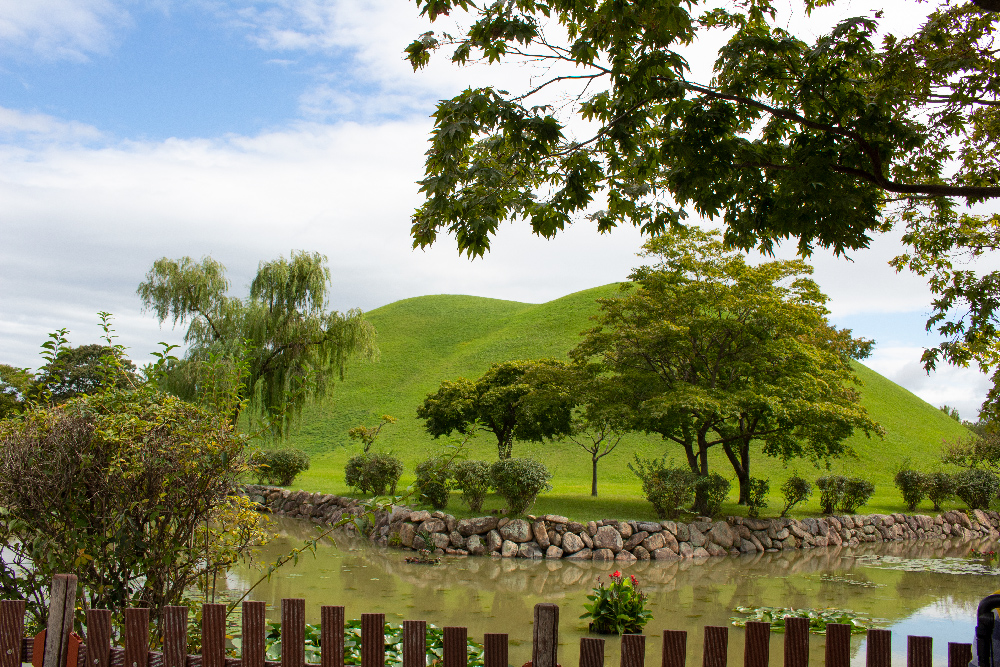
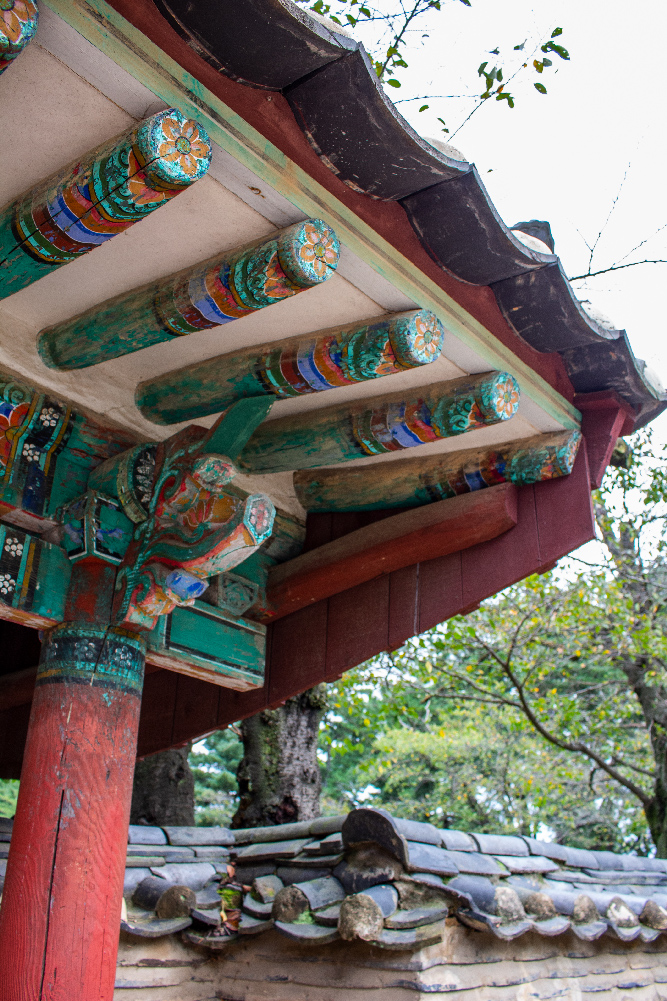
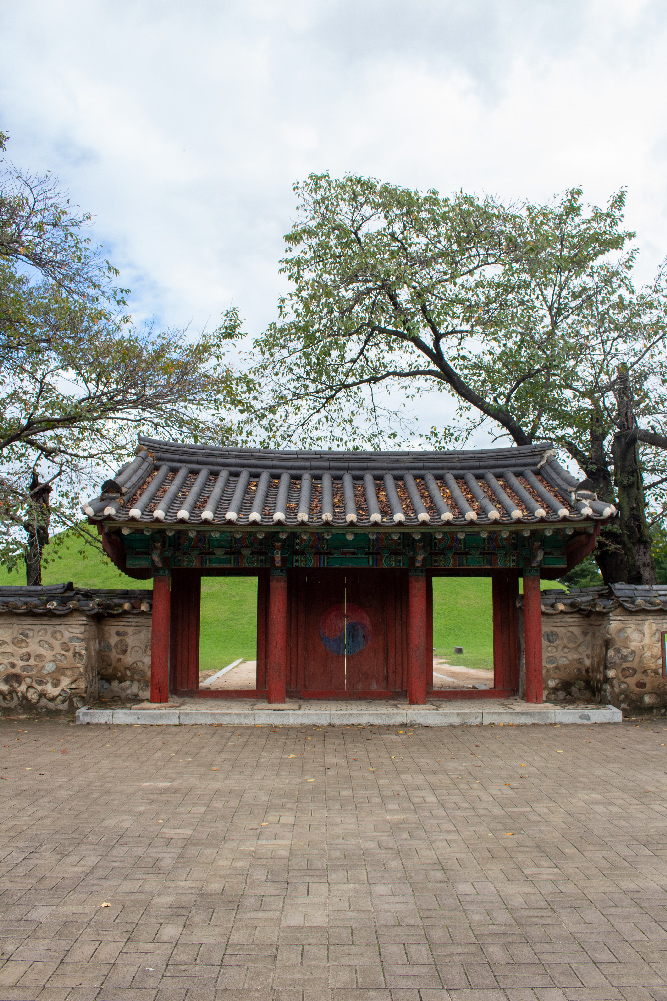
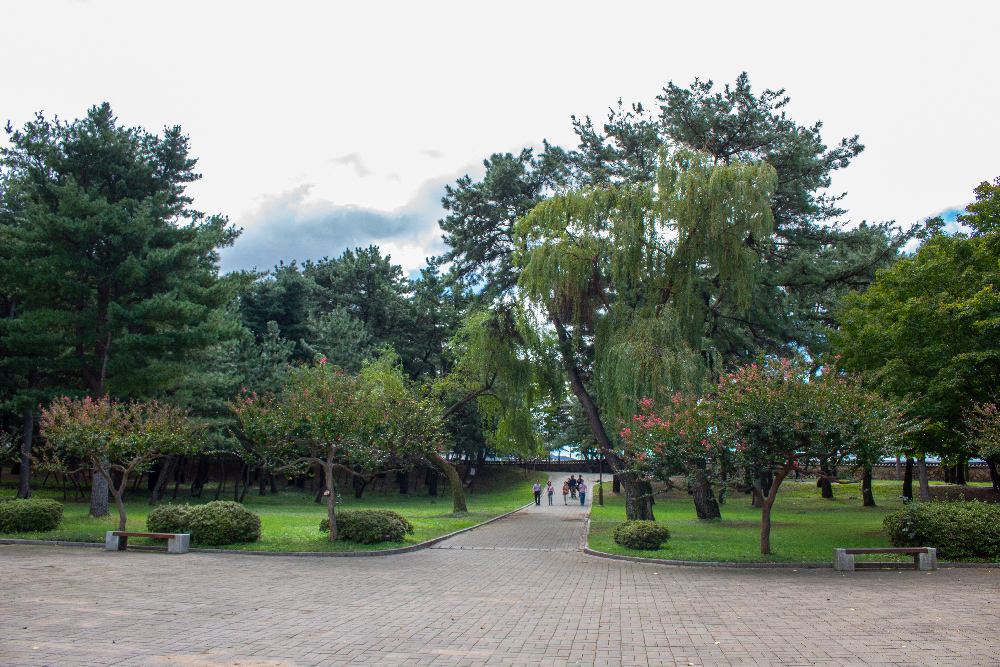

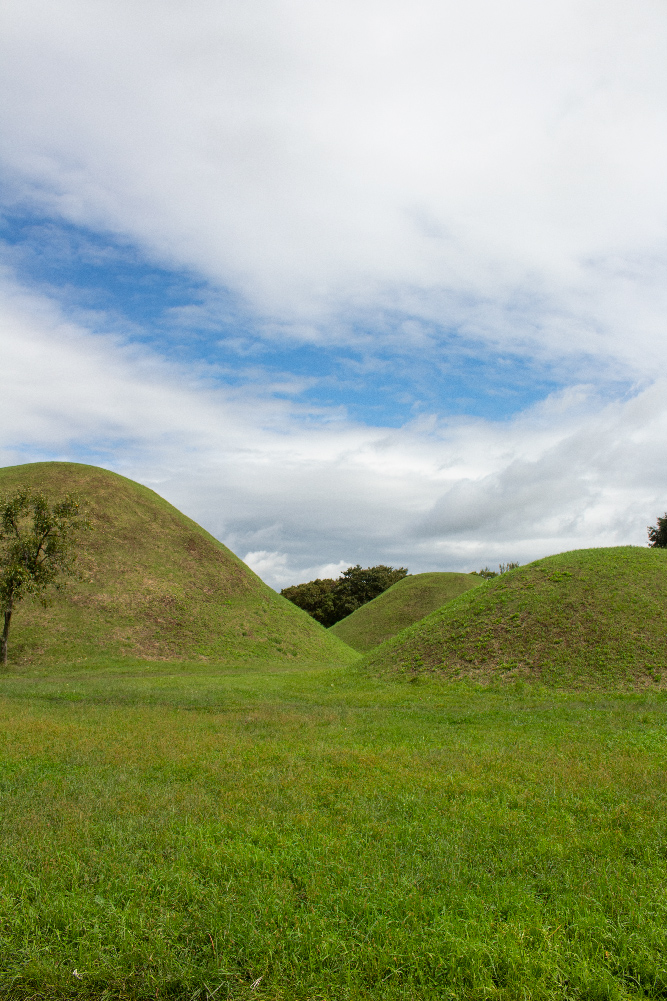
There are benches along the way, as well as trees for shelter from the sun. From time to time, we come across mounds, which are in fact burial mounds containing tombs. Not all the tombs have been identified, but most of them are thought to belong to kings. The best-known tomb is Cheonmachong 천마총, where numerous artefacts have been discovered and can now be seen at the Gyeongju National Museum. The view of the hills rising up to the horizon, reminiscent of a sea of green grass contrasting with the blue sky we were lucky enough to see, is truly a breathtaking sight and one of the most beautiful moments I’ve had in Korea.

An observatory amid a sea of pink flowers
We then continued our walk to the Cheomseongdae observatory 첨성대, which was built during the reign of Queen Seondeok (632-647) to observe the stars in order to forecast the weather. It has been a national treasure since 1962 and is the oldest astronomical observatory in Asia! The shape and size of this observatory is incredible, with 362 stacked stones representing the number of days in a lunar year. These stones form 27 layers in honour of the queen, the 27th ruler of the country. The 12 layers of stones below and above the window represent the 12 months of the year. The 24 layers make up one lunar year, or 24 solar periods.
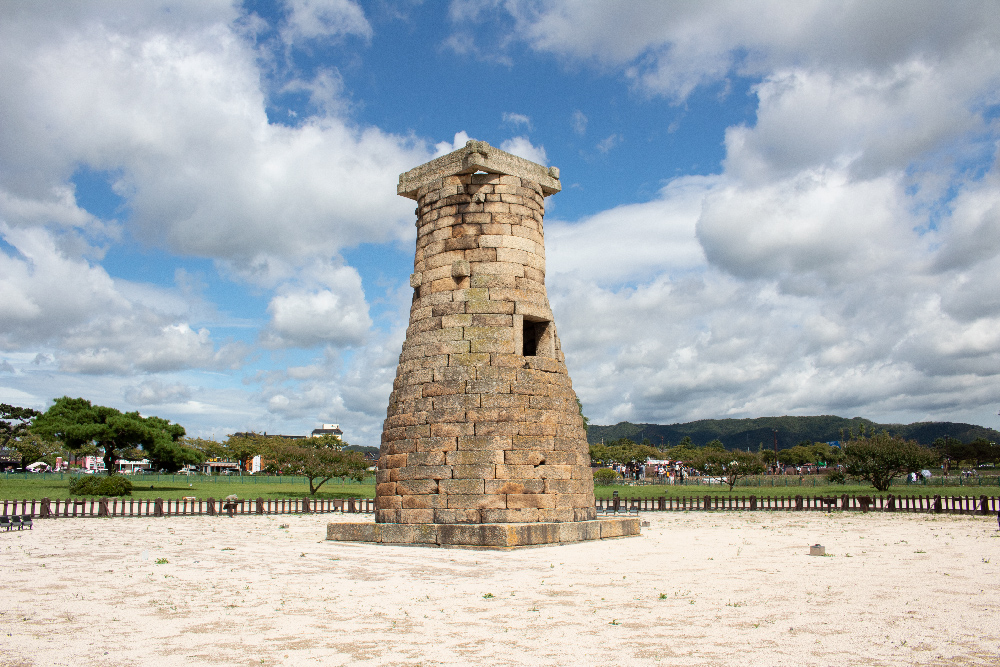
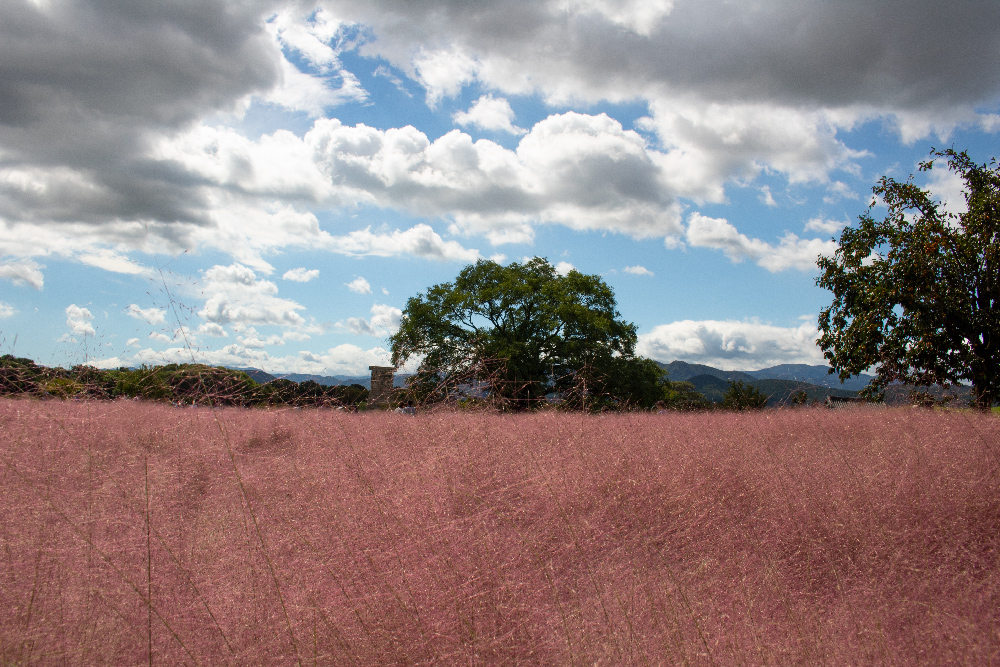
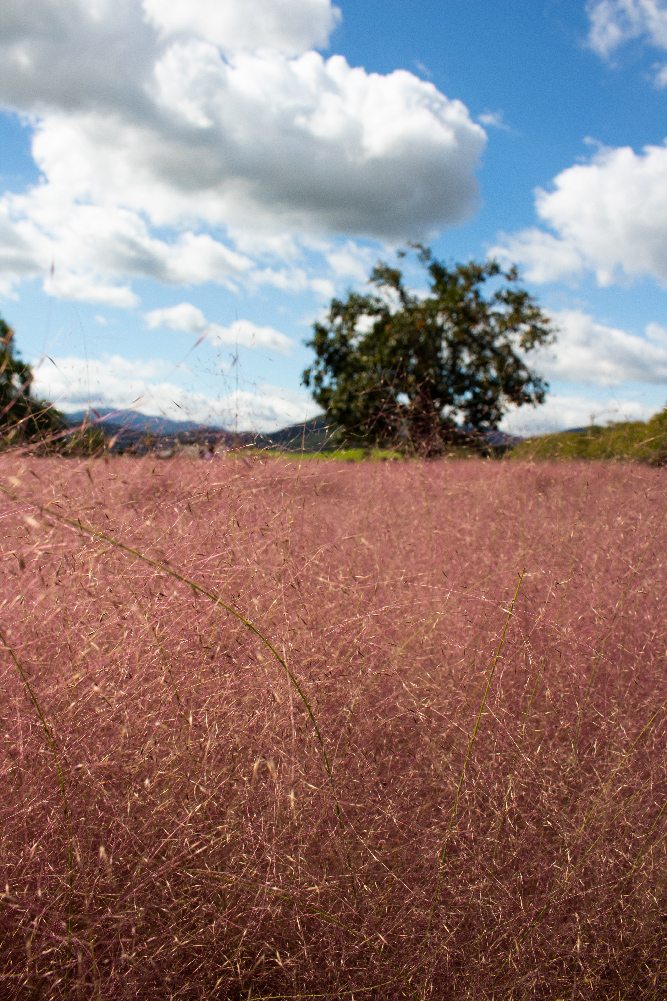
Pink myulli field
Next to the observatory you’ll find a huge field of pink myulli, pink-coloured grasses that come to life in autumn. I have to admit, this was a big part of the reason I wanted to visit Gyeongju! I’d seen photos on the Korean tourist board’s Instagram account and was dying to see these fields of pink flowers for myself. I had no regrets as it was absolutely beautiful and I couldn’t resist taking a few photos!
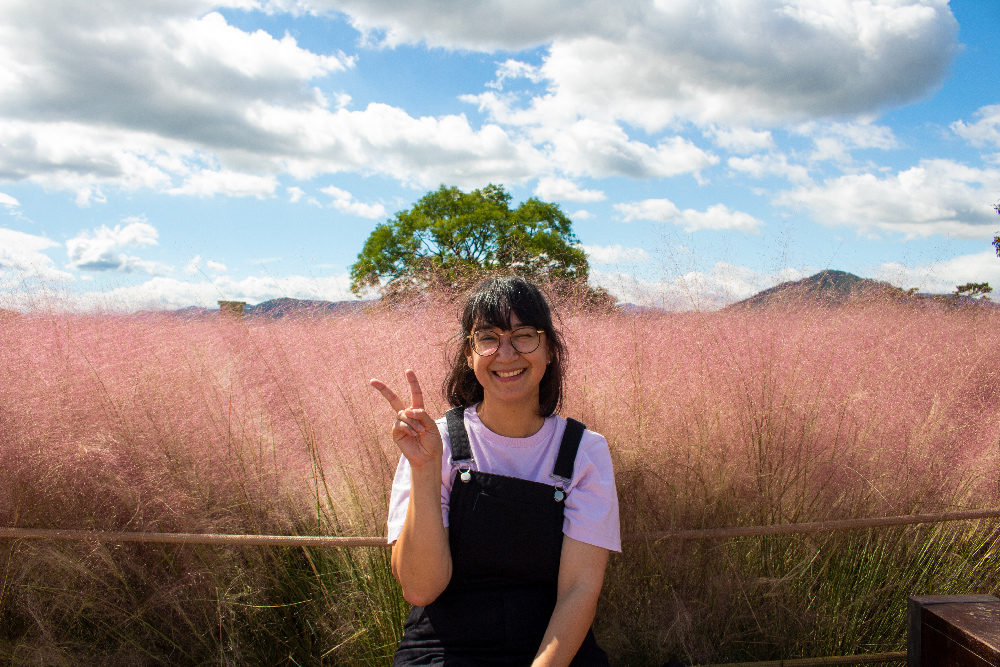
Continuing our walk, we passed the Woljeonggyo Bridge 월정교, built during the 19th year of King Gyongdeok and then destroyed during a Mongol invasion. This one was rebuilt faithfully to the original, with a traditional wooden structure between 2010 and 2016. It’s an absolutely superb bridge, and I recommend that you take a look!
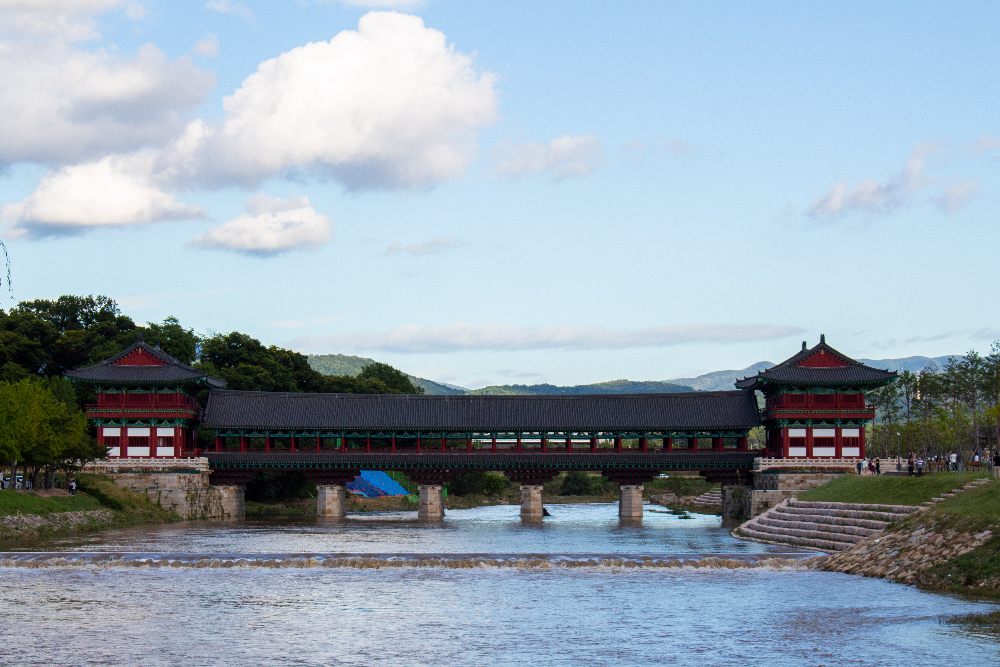
Discover Korean culture in a traditional village
We then arrived at Gyochon Hanok Village 경주 교촌마을, a pretty village with traditional Korean houses (I’ll talk more about this in a future article) where you’ll find craft shops, small cafés and also activity stalls where you can discover Korean culture (for example, how to make tteok, the sticky rice cake).

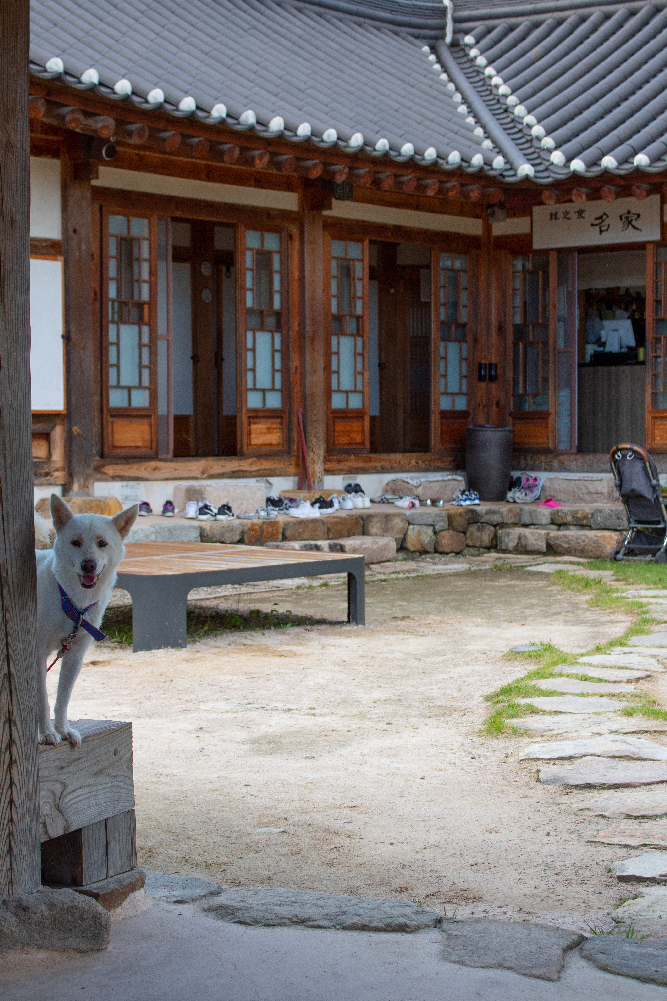
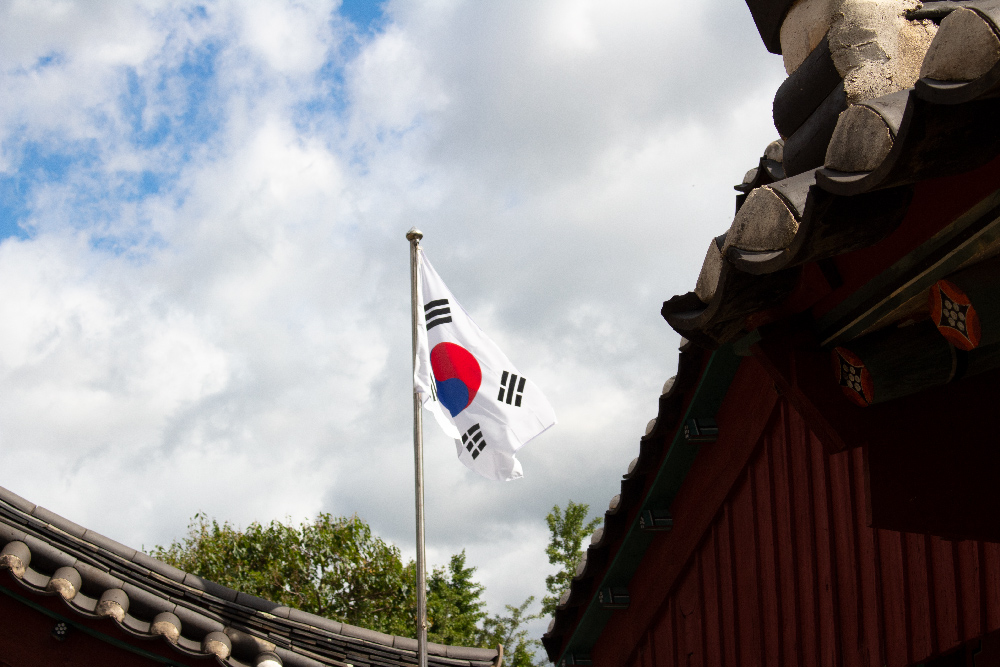

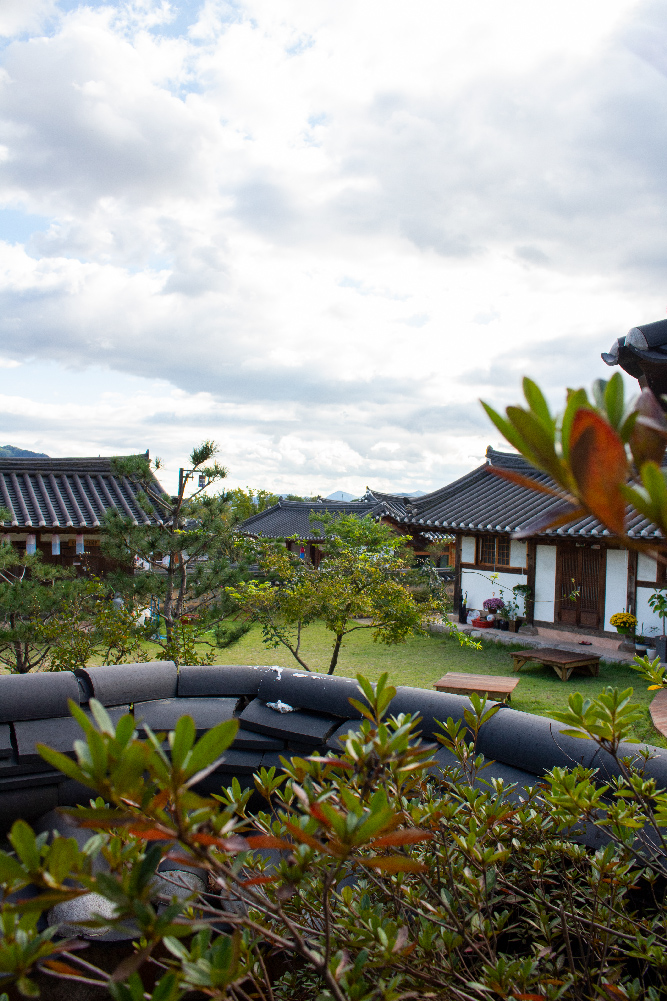
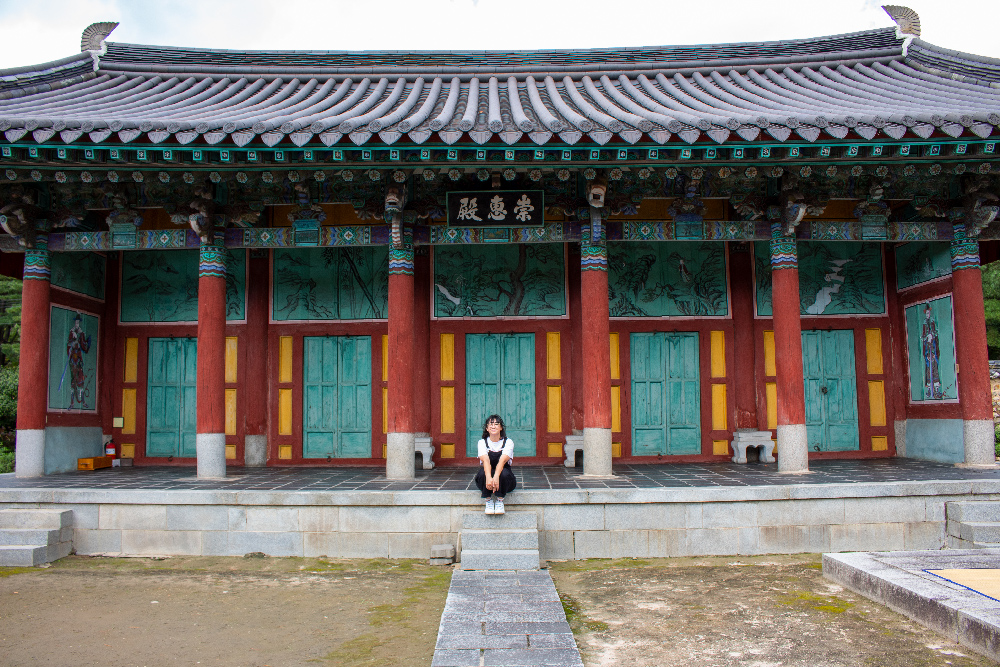
We decided to stop at a restaurant to eat and rest our feet before continuing our journey to the complex of the five royal tombs (Gyeongju Five Royal Tombs 경주 오릉), to the west of the city center, along the Namsam River. The walk was a bit long, but we took our time and felt refreshed. Nevertheless, you can still consider taking the bus if you wish!
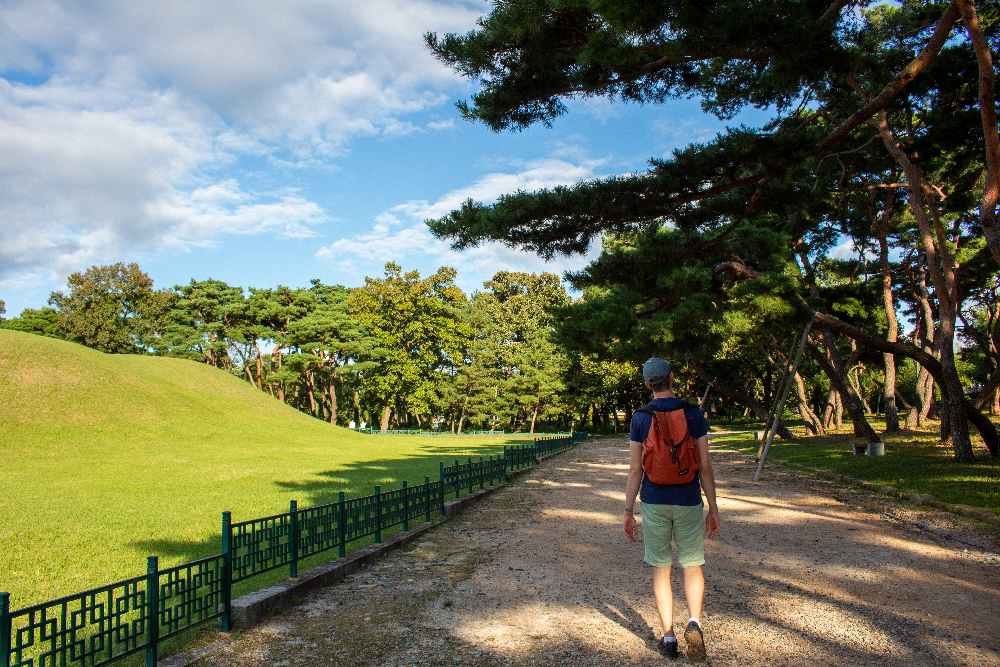
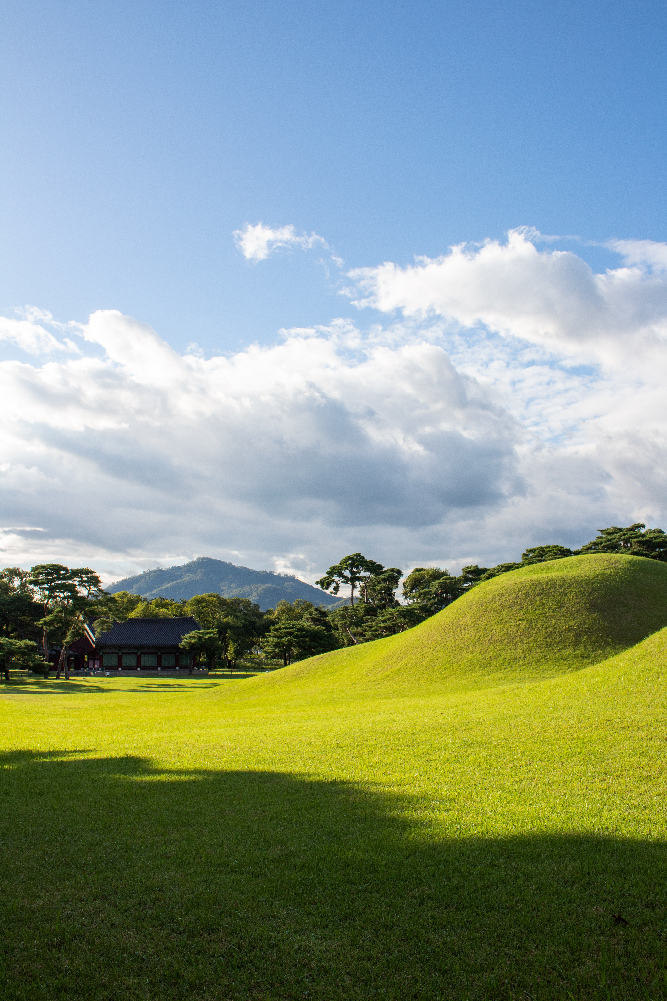
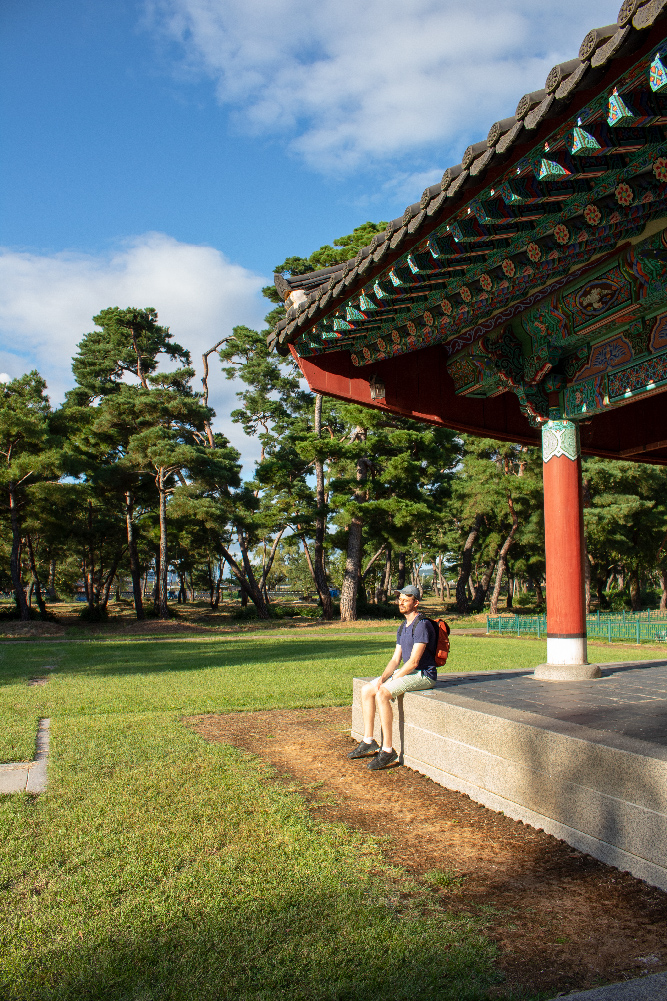
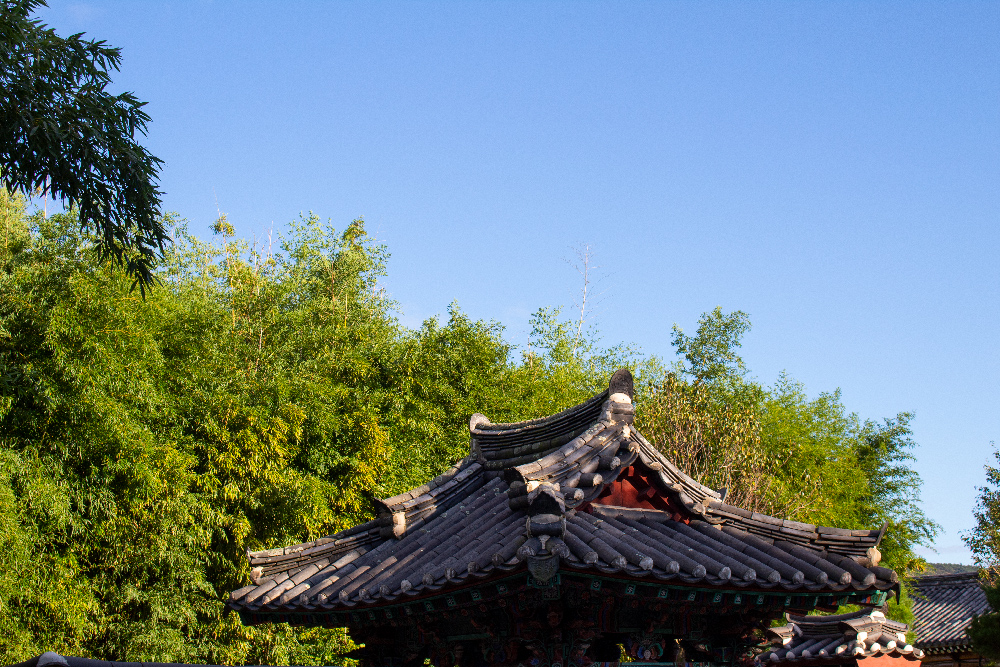
The Gyeongju Five Royal Tombs 경주 오릉 is actually a park surrounded by a large stone wall and is the location of the tombs of 4 kings, including King Park Hyeokgeose, the founder of the Silla Kingdom, and Queen Aryeong, his wife. It’s a very beautiful park that obviously attracts fewer tourists since it’s a bit outside the city center, and we were able to enjoy a stunning golden hour there!
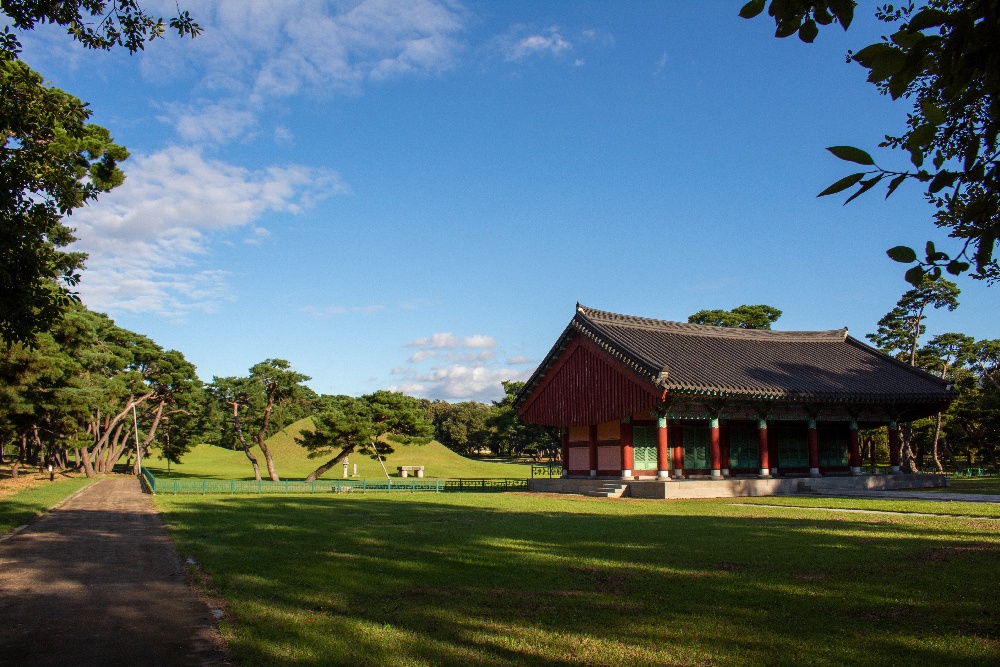
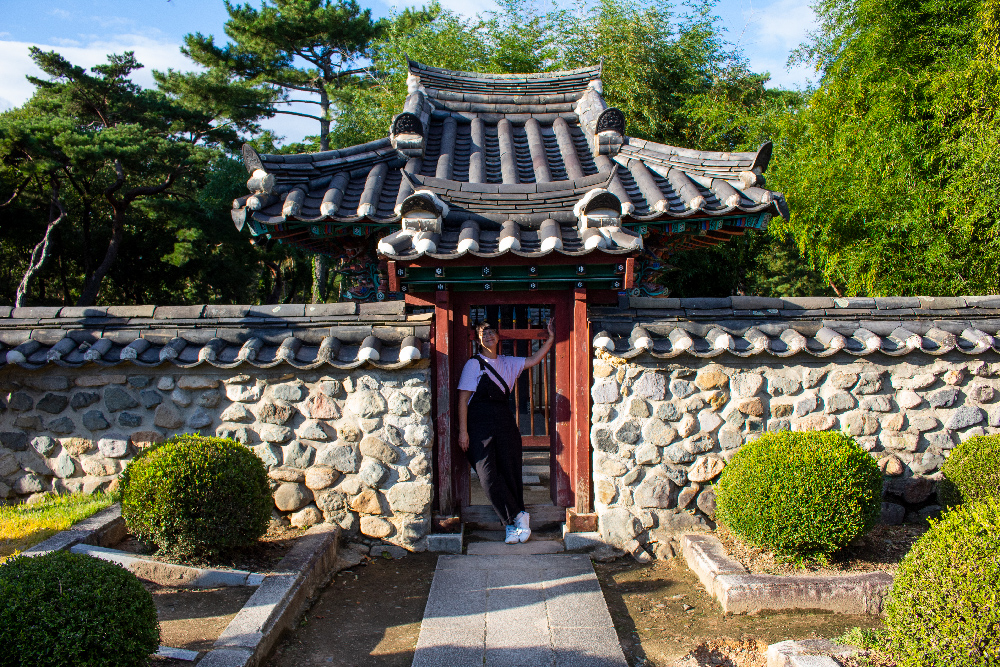
A breath-taking end of day at the palace
We still had one more wish for the day in Gyeongju, and that was to see the Donggung Palace and its artificial pond, Anapji 경주 동궁과 월지. The only problem was that the palace is located to the east of the historical center of Gyeongju, and we were in the west, and our little feet were suffering after such a long day… No worries, we hailed a taxi, and within 10 minutes, we had arrived!
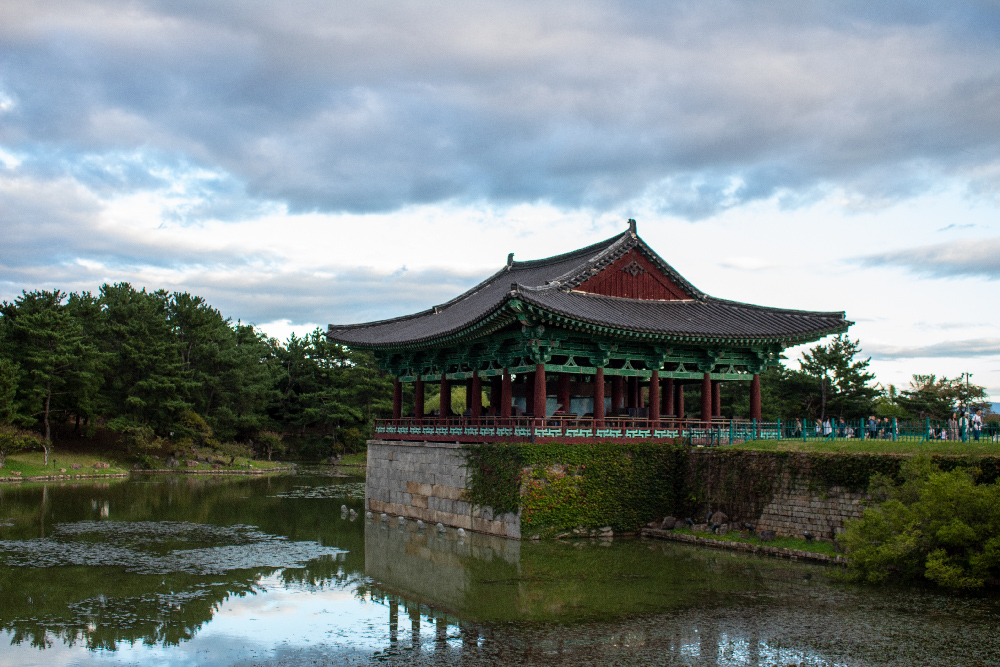
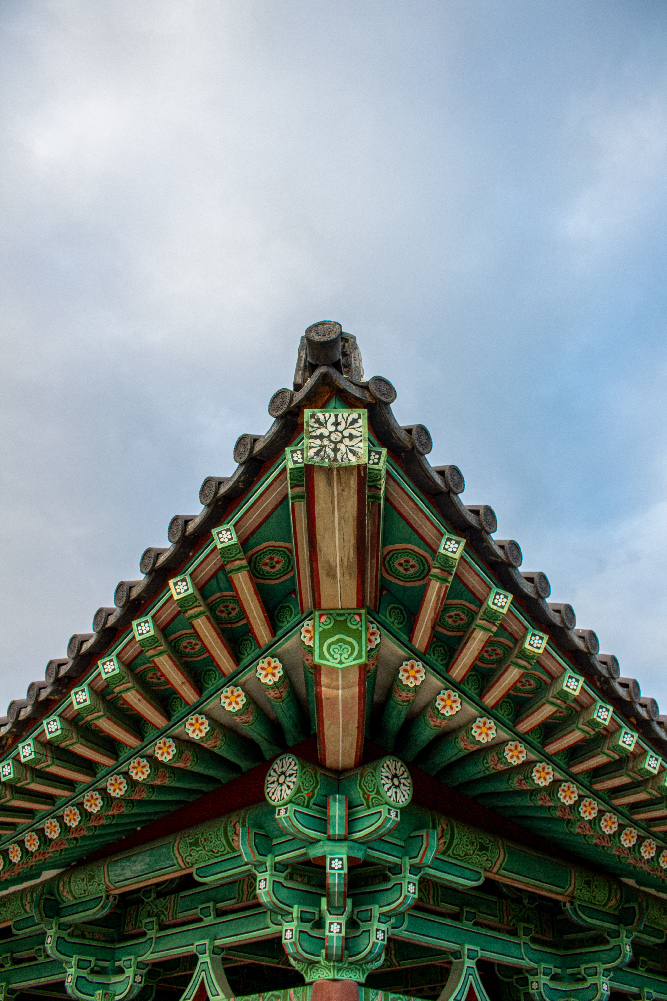
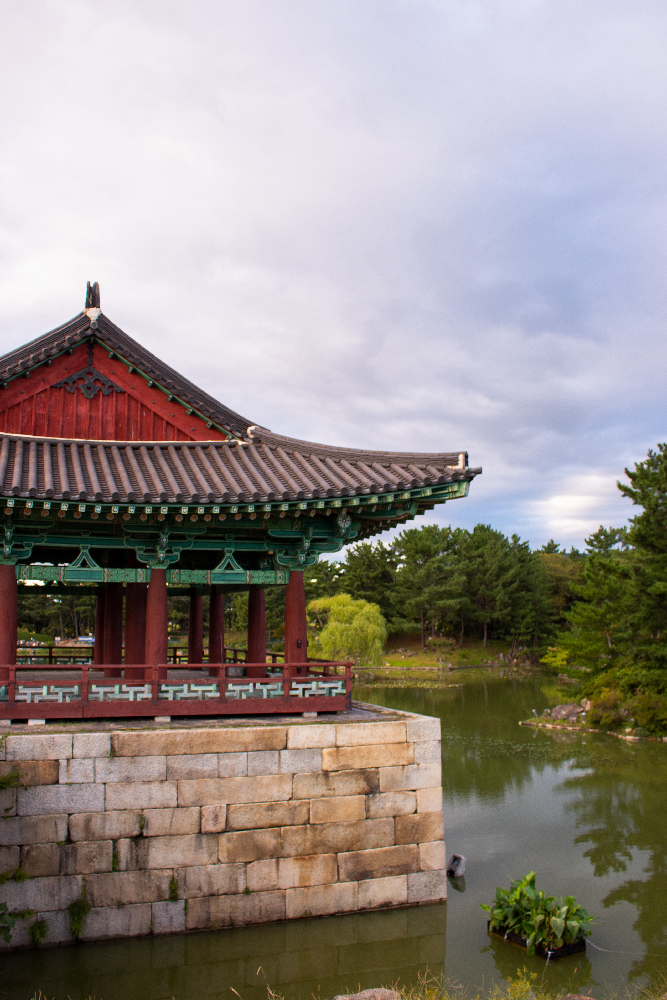
The Donggung Palace dates back to the late 7th century, and it was King Munmu who ordered its construction in 679 after the unification of the Silla Kingdom. A few years later, the artificial pond was built, and the palace served as a residence for guests and for various festivities before being abandoned. Excavations have revealed over 26 buildings surrounding the palace, and the site is currently under reconstruction to restore its former beauty. The visit is relatively quick, and a lovely park surrounds the palace. While it is stunning during the day, at night, it sparkles with thousands of lights as it is entirely illuminated. We understand why this place is so popular in the late afternoon. The path is gently lit, and nothing disturbs the pond, creating a magnificent mirror effect. Many people were strolling with their cameras to capture the magic of the place until the park closed at 10 p.m. While we didn’t stay that late, we were still mesmerized by the beauty we witnessed.
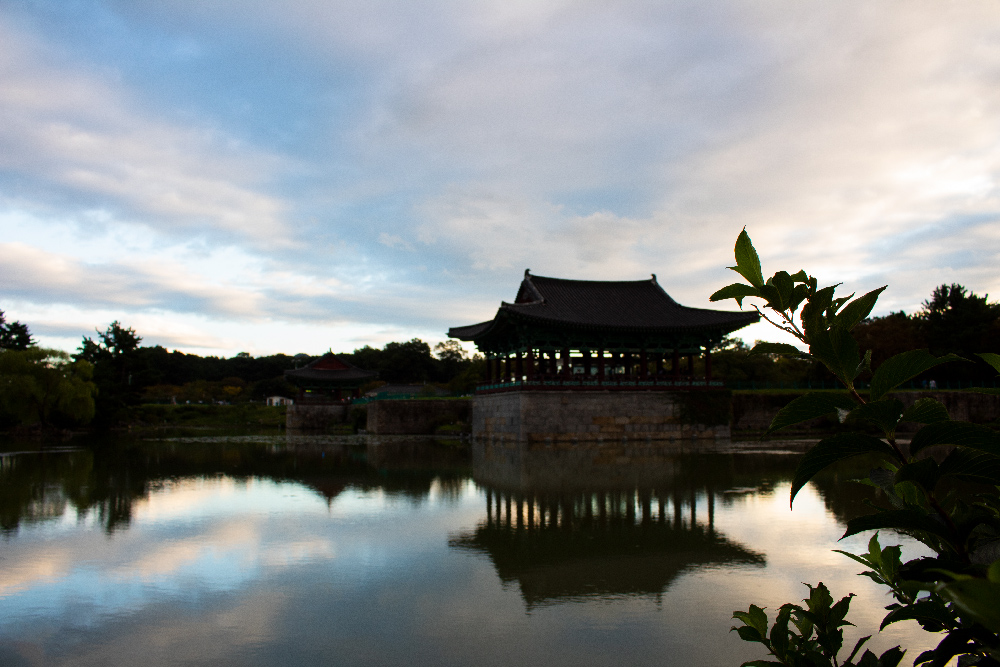
After this long day of discovering Gyeongju and its beauties, we took an Intercity bus to Busan before ending the evening at an all-you-can-eat barbecue. I still remember that evening very well – we were so tired, looking at our photos from the day while having dinner… Then, our table neighbors offered to share a bottle of soju (the local alcohol) with us and even gifted us heart-shaped shot glasses filled with soju to thank us for visiting Korea! These are the kind of memories that make a trip unforgettable!
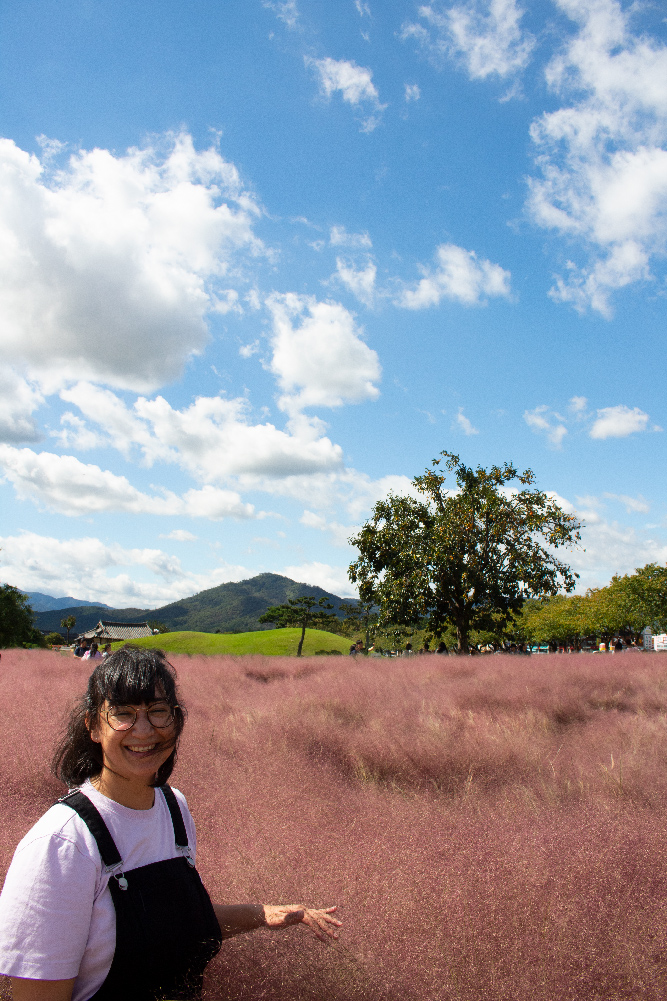
Useful information
- Gyeongju map: https://en.morekorea.net/article.php?no=24&enlargeimgno=2
- Admission for two to the Daereungwon Tumuli Park : 4000₩ (3€). Website.
- Admission for two to the Gyeongju Five Royal Tombs : 6000₩ (4,50€). Website.
- Admission for two to the Palais Donggung : 6000₩ (4,50€). Website.
(prices may have changed since our visit)
So, what do you think of Gyeongju? Would you like to explore this city?
